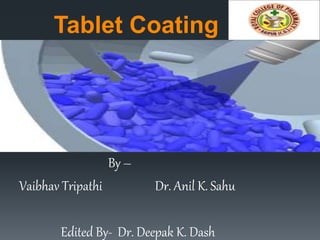The document provides a comprehensive overview of tablet coating, detailing its importance in tablet production, various coating materials, and methods employed for coating. Advantages, limitations, and coating defects are explored, with descriptions of types of coatings such as sugar, film, enteric, and compression coatings. Additionally, various equipment and processes used in coating are outlined, emphasizing the need for precision to avoid defects and ensure successful outcomes.


























































































